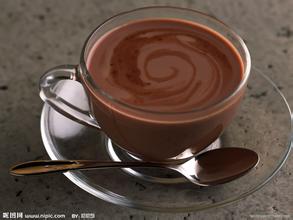What kind of coffee is suitable for Italian blending with coffee beans from Sumatran coffee producing areas
What kind of coffee is suitable for Italian blending with coffee beans from Sumatran coffee producing areas
Sulawesi: Sulawesi Coffee
Sulawesi Island, formerly known as Celebes Island "Celebes", is also called Celebes Coffee Celebes Coffee.
The most famous is Toraga, or Tonaga, Toraja.
Toraja coffee comes from Tana Toraja in the Tanatolaga region of South Sulawesi, South Sulawesi Province, named after the local population, the Toraga. Tana Toraja is located about 300km north of Makassar, the provincial capital of Wangkasek, and is a famous tourist destination in Indonesia.
At first, the coffee industry in Sulawesi mainly supplied the Japanese market, and Japanese businessmen established the original coffee industry on the island of Sulawesi.
The traditional method of coffee treatment is wet planer, Giling Basah,wet-hulled.
Java: Java Coffee
Java is the most economically developed island in Indonesia and the most densely populated area.
Jakarta, the capital of Indonesia, located in the northwest of Java, is the largest city in Southeast Asia. In addition, Indonesia's second and fourth largest cities are located on the island of Java.
Java is the first region in Indonesia to grow coffee and has taken the lead in the world coffee market as early as the 18th century. The famous Java mocha, made from Java coffee mixed with Yemeni mocha, represents the coffee impression of an era. In addition, there is the classic monsoon coffee Moosooned-coffee, or old coffee Aged Coffee.
Coffee cultivation in Java was originally carried out as a large farm, established by Dutch colonists in the 18th century, and gradually transformed into small farmers after World War II and many changes. High-quality Javanese coffee usually comes from five existing large farms. Although Java coffee production only accounts for about 10% of Indonesia's total coffee production, it is an important component of Indonesian boutique coffee.
The main coffee producing area on the island is located in Ijen Plateau, the Ijen Highland area around Ijen Volcano.
Java coffee is traditionally treated by washing.

Important Notice :
前街咖啡 FrontStreet Coffee has moved to new addredd:
FrontStreet Coffee Address: 315,Donghua East Road,GuangZhou
Tel:020 38364473
- Prev

Which is better, the water system or the sun-dried coffee beans? Introduction to the origin of the flavor description grinding scale manor
Which is better, the water system or the sun-dried coffee beans? The history of Yunnan small grain coffee began with the Robusta varieties brought by missionaries in the 19th century. In the 1950s, Soviet experts brought two major Arabica varieties to Baoshan, Yunnan to cultivate and popularize. After a special period, scientific research and cultivation tended to stagnate, and Baoshan iron card varieties were used in the international coffee competition after the reform and opening up.
- Next

How long is the shelf life of coffee beans after baking?
How long is the shelf life of coffee beans after baking? fresh beans are suitable for sealed preservation in a bag with an one-way exhaust valve. be sure to empty the air in the bag as much as possible after use, and then keep it sealed. Usually put beans in a cool and ventilated cabinet, as long as it is not close to the heat source is not a big problem. If it's not for special reasons, don't put beans in the fridge! Normal temperature
Related
- Guji coffee producing area of Guji, Ethiopia: Humbela, Shakiso, Wulaga
- What is the most expensive variety of Qiloso in BOP multi-variety group?
- How to store the coffee beans bought home?
- Why are Yemeni coffee beans so rare now?
- Ethiopian Sidamo all Red Fruit Sun Sun Santa Vini Coffee beans
- SOE is mostly sour? What does it mean? Is it a single bean? what's the difference between it and Italian blending?
- Is Italian coffee beans suitable for making hand-brewed coffee?
- How to choose coffee beans when making cold coffee? What kind of coffee beans are suitable for making cold coffee?
- Just entered the pit to make coffee, what kind of coffee beans should be chosen?
- Can only Japan buy real Blue Mountain Coffee? What are authentic Jamaican Blue Mountain coffee beans?

